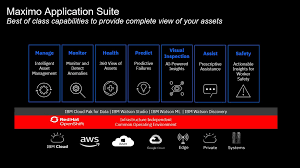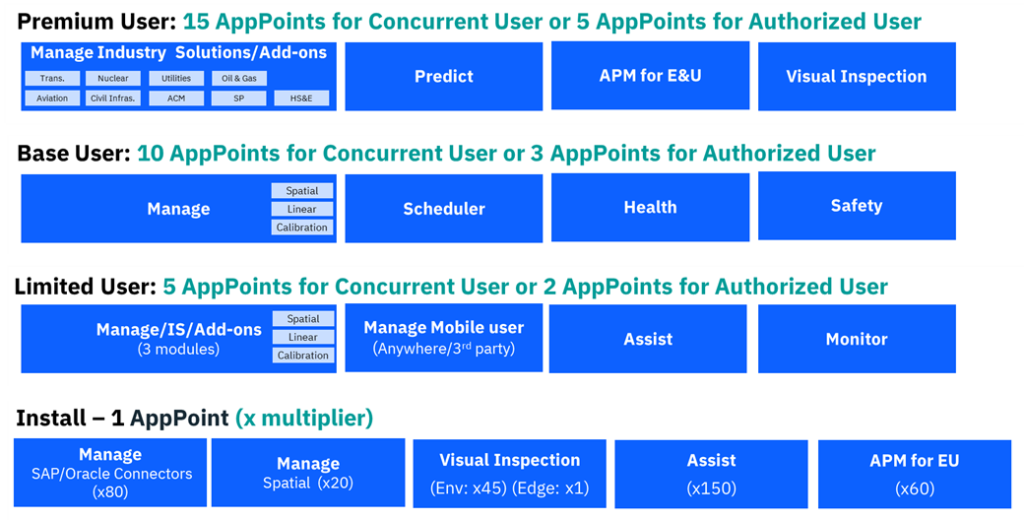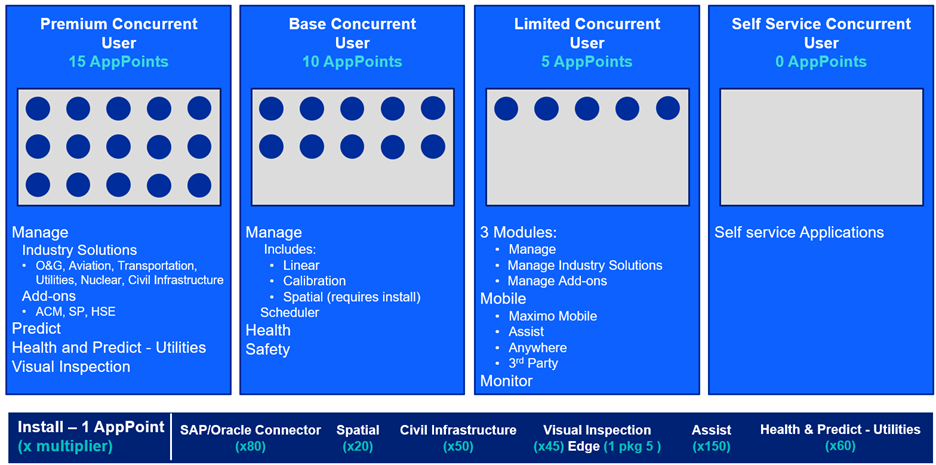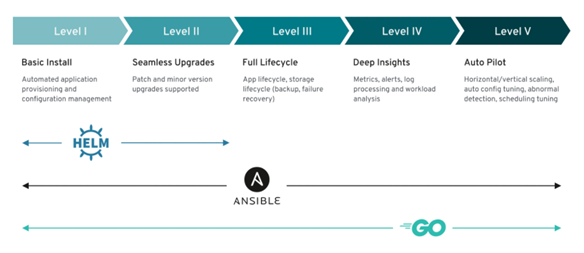5 Min Read


The release of IBM Maximo 8 has created a buzz around the Maximo community. It comes with enhanced Asset Performance Management applications (APM applications), which long-term users are undoubtedly familiar with. Moreover, Maximo 8 also has significant licensing changes, a change in the user interface, and a new technology hosting platform called the ‘Red Hat OpenShift Platform.’
But first, we should clarify some confusion about the name of the latest update. Unlike previous updates, the newest update of Maximo is known as the ‘Maximo Application Suite’ (or MAS). From 2025 onwards, earlier versions of IBM Maximo (such as Maximo 7.6) will no longer be supported, meaning that existing users have until that year to transition to MAS.
The IBM Maximo Application Suite, as per IBM, is an ‘integrated suite’ and part of a more comprehensive digital transformation to move away from traditional asset management. This means that users will have access to the whole range of asset management applications in one suite. With the entire suite at your company’s disposal in one location, asset management and maintenance operations will become much easier!
Before detailing the maintenance features in the Maximo Application Suite, let’s first briefly describe some of the significant changes that Maximo users can expect.
Application Points (App Points) system
The new Maximo Application Suite has an overhauled licensing system; initially, while this new licensing system might appear confusing to users, it is essential to understand it.
The new MAS licensing system involves the use of App Points. App Points effectively streamline the licensing for Maximo integrations and applications by using a single part number – this means that users can access any of the modules in Maximo Asset Suite; however, users will only pay for the actual usage of modules (in other words, only pay for the modules they use). In addition, companies can either purchase points outright under a perpetual licensing scheme (in which maintenance fees would apply), or companies can buy leased licenses for a set period.
App Points constitute a single number in Maximo and are best thought of as a ‘pool.’ Therefore, the number of App Points depends on your business’s purchase tier (see images below). As users log in to access the integrations in the Suite, App Points will be consumed as users log on; however, the App Points are returned to the bucket once the session ends.



Red Hat OpenShift Platform:
The deployment of the Red Hat OpenShift Container Platform represents a move away from traditional cloud-based asset management. The software and technology involved are complicated, but the upshot of the adoption of Red Hat is that your business will need to use this in the future. This software will also result in applications running faster while using fewer resources to run them!
Should your company host Maximo as a Service, your cloud provider/cloud vendor should handle the transition to Red Hat. However, if you host Maximo as an on-premises solution, your company might need external support to transition to this platform.


Application Suite Of Maximo 8.7 - the best for asset management
Now that we have detailed some of the new non-maintenance features let’s explore the maintenance features and benefits of the new Maximo Application Suite.
IBM Maximo Manage – Maximo functionality with a new name

In Maximo Manage, long-term users will be happy to hear that many of the features in Maximo v7.6.1.2 are found in this MAS integration.
Additionally, industry solutions will also be available in this section of the IBM Maximo Application Suite. These solutions include IBM Maximo Aviation, Oil & Gas, Aviation, Utilities, and more!
Maximo Manage add-ons include some familiar names for long-term users as well. These add-ons include Maximo Mobile, Maximo Anywhere, and Maximo Service Provider, which will all continue to be vital for maintenance operations.
IBM Maximo Monitor
In the Maximo Application Suite, Maximo Monitor is one of the integrations used for condition-based maintenance. As the name suggests, this application is crucial for monitoring the current state of your vital assets. With Monitor, artificial intelligence (AI) systems and cameras are used to detect anomalies within your assets. Related to this specific Monitor feature is an integration called ‘Visual Inspection,’ another MAS application we will cover shortly.
As most assets now have sensors, asset data is recorded and sent to a centralized location. With the help of Monitor, users are given tools to interpret asset data. In turn, this allows users to make better decisions about managing their assets as they will have better visibility over them. Maximo Monitor also provides users with hierarchical navigation of assets and can automatically send alerts.
IBM Maximo Health – integrating your maintenance and reliability teams
The Health integration brings together the maintenance and reliability teams at your organization. With this integration, maintenance teams gather data from critical assets – such as age, maintenance history, and performance/operational data. This is then shared with the reliability teams at your organization. This shared data, of course, enables your business to make better decisions about your assets.
Additionally, the Health integration allows users to score the ‘health’ of their assets using the data from their assets – asset health scores are divided into ‘good,’ ‘fair,’ and ‘poor,’ allowing organizations to manage their risks with ease. Users can view asset data in the same integration by organizing it into customizable categories.
IBM Maximo Predict

Maximo Predict is the primary integration for predictive maintenance in the Maximo Application Suite. With this integration, your company is ably assisted with moving away from reactive maintenance to predictive maintenance with machine learning and data analytics. Essentially, this solution can predict failures among your assets using any asset’s available operational data.
Moreover, this IBM Maximo APM application provides data scientists at your company with five templates that companies can use to build the most common predictive models. Essentially, these predictive models will include the factors that can lead to asset failure; subsequently, a business can utilize these models to help identify the risks to their assets.
While discussing Maximo Predict, it is also worth discussing the Digital Twin Exchange. This MAS feature enables vendors to share data (at a cost) with asset operators. This data includes health scoring methods, key performance indicators extracted with the help of AI, predictive failure models, fault codes, and service/operations manuals for assets.
IBM Maximo Health and Predict – Utilities
This MAS integration aims to help clients in the utility industry. Essentially, this integration offers additional Health and Predict resources/extensions for any company in the utility industry. These other capabilities include prebuilt data models for critical assets and extra support in the form of asset scoring systems to indicate the health of assets.
IBM Maximo Visual Inspection
Earlier, when discussing Maximo Monitor, we mentioned MAS’ integration of ‘Visual Inspection.’ Using AI and camera technology, Visual Inspection can detect anomalies with technicians not having to be physically present at the asset site; Visual Inspection can also build different image models for an asset – such as video action detection or image classification.
IBM Maximo Visual Inspection Edge
With Visual Inspection Edge, domain experts – such as plant managers, supervisors, or reliability engineers – can configure AI flows to analyze images and videos from cameras/sensors monitoring the assets.
Moreover, this application can also be used by companies to define alerts and set up a notification system for any asset when issues arise.
IBM Maximo Assist
Maximo Assist helps asset and maintenance managers achieve greater reliability, visibility, and productivity from their critical assets. With the support of AI and machine learning, managers will receive better recommendations and troubleshooting procedures to maintain their assets better.
This MAS integration also facilitates collaboration between remote experts and field technicians while maintenance operations are ongoing. Field technicians can be assisted with real-time video and audio streaming and augmented reality. With these capabilities and solutions, clients will also benefit as technicians can improve ‘first fix’ rates, lower costs, and reduce the number of errors in the clients’ equipment.
IBM Maximo Safety
Finally, Maximo Safety is concerned with ensuring that enterprise equipment and devices remain safe and reliable. Maximo Safety analyzes data from sensors, devices, and wearables and provides a usable interpretation of this data to employees. Using this information, any client can continuously improve their enterprise’s safety policies and procedures.
Maximo Safety also comes with a robust analytics dashboard that details the current hazards to your employees; this dashboard also provides a breakdown of where current risks are located and can further breakdown these hazards by category.
Wrapping Up!
Transitioning to and navigating the new Maximo Application Suite and understanding new features like App Points, new interfaces for users, and the Red Hat OpenShift platform will require some support.
For this reason, your business should speak to Banetti, a Maximo consulting group with a wealth of experience in helping companies with the installation and navigation of IBM Maximo.
Should your company wish to install (or transition to) the new Maximo Application Suite, contact Banetti today to get the best support possible!